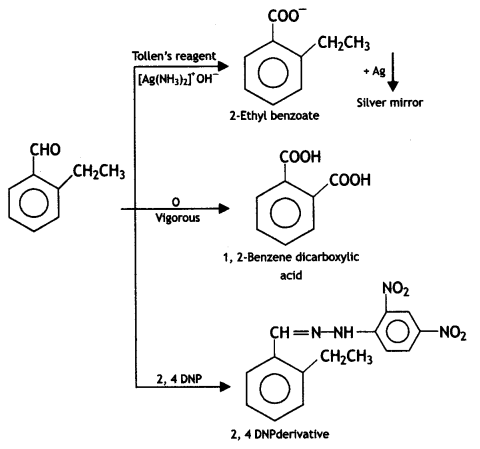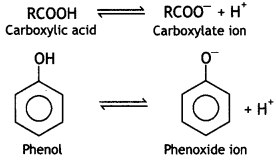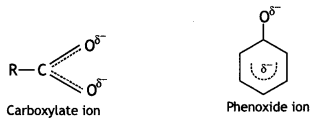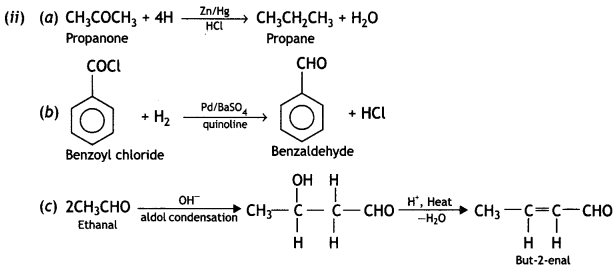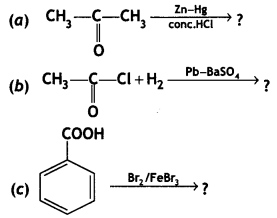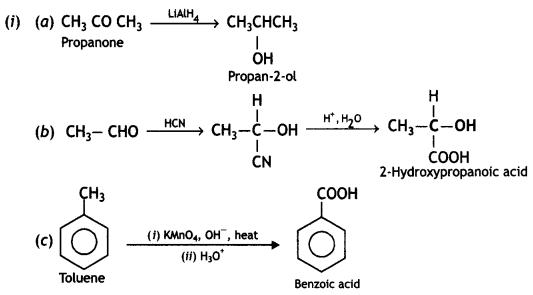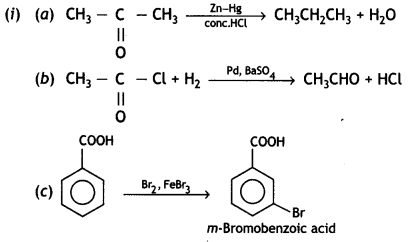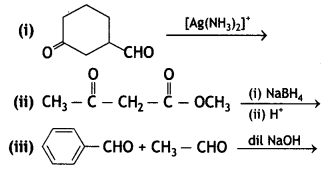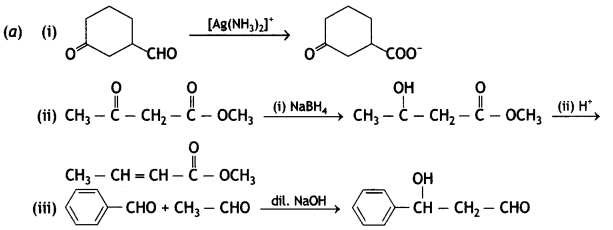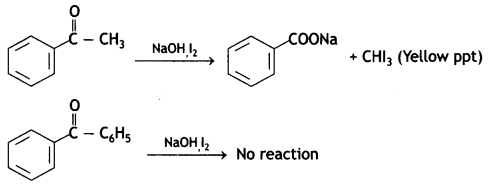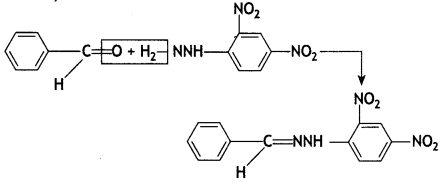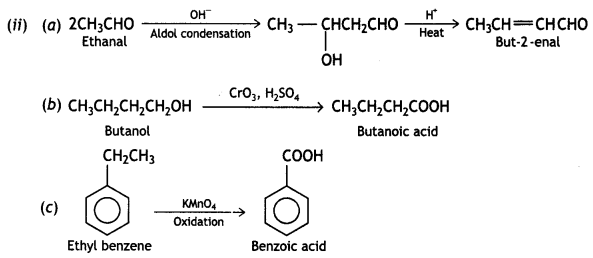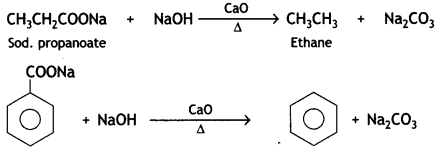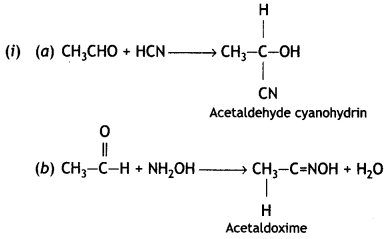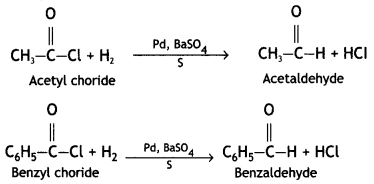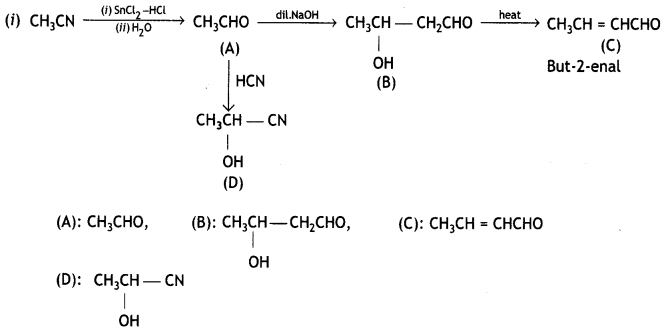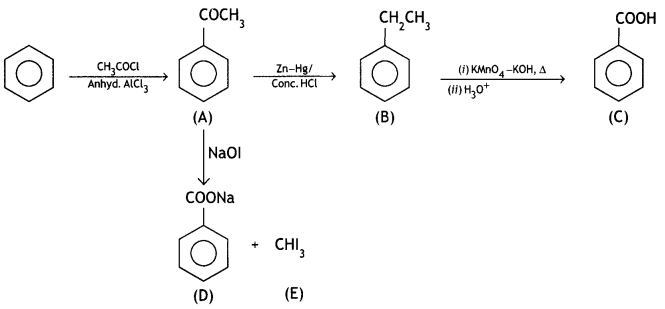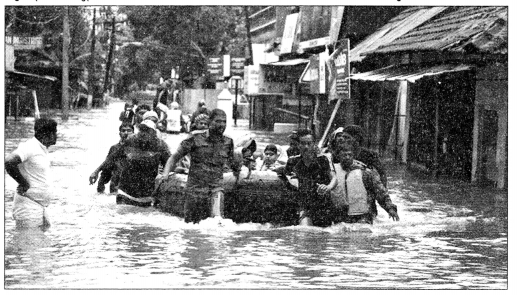We have given detailed NCERT Solutions for Class 9 Sanskrit Shemushi Chapter 12 वाङ्मनःप्राणस्वरूपम् Questions and Answers come in handy for quickly completing your homework.
Shemushi Sanskrit Class 9 Solutions Chapter 12 वाङ्मनःप्राणस्वरूपम्
Class 9 Sanskrit Shemushi Chapter 12 वाङ्मनःप्राणस्वरूपम् Textbook Questions and Answers
अभ्यासः
प्रश्न 1.
एकपदेन उत्तरं लिखत –
(क) अन्नस्य कीदृशः भागः मनः?
(ख) मध्यमानस्य दनः अणिष्ठः भागः किं भवति?
(ग) मनः कीदृशं भवति?
(घ) तेजोमयी का भवति?
(ङ) पाठेऽस्मिन् आरुणिः कम् उपदिशति?
(च) “वत्स! चिरञ्जीव”-इति कः वदति?
(छ) अयं वाहः कस्मात् उपनिषद: संग्रहीत?
उत्तर:
(क) अणिष्ठः
(ख) सर्पिः
(ग) आशितान्न-अणिष्ठः
(घ) वाक्
(ङ) श्वेतकेतुम्
(च) आरुणिः
(छ) छान्दोग्योपनिषदः
प्रश्न 2.
अधोलिखितानां प्रश्नानामुत्तराणि संस्कृतभाषया लिखत –
(क) श्वेतकेतुः सर्वप्रथमम् आरुणिं कस्य स्वरूपस्य विषये पृच्छति?
(ख) आरुणिः प्राणस्वरूपं कथं निरूपयति?
(ग) मानवानां चेतांसि कीदृशानि भवन्ति?
(घ) सर्पिः किं भवति?
(ङ) आरुणेः मतानुसारं मनः कीदृशं भवति?
उत्तर:
(क) श्वेतकेतुः सर्वप्रथमम् आकर्णि मनसः स्वरूपस्य विषये पृच्छति।
(ख) आरुणिः प्राणस्वरूपविषये कथयति ‘पीतानाम् अपां योऽणिष्ठः सः प्राणः’ इति।
(ग) मानवः यादृशम् अन्नादिकं गृह्णाति तादृशम् एव तेषाम् चेतांसि भवन्ति।
(घ) मध्यमानस्य दध्नः योऽणिमा ऊर्ध्वः समदीषति स तत्सर्पिः भवति।
(ङ) आरुणे: मतानुसारं मनः अन्नमयं भवति।
प्रश्न 3.
(अ) ‘अ’ स्तम्भस्य पदानि ‘ब’ स्तम्भेन दत्तैः पदैः सह यथायोग्यं योजयत –
अ – ब
- मनः – अन्नमयम्
- प्राण: – तेजोमयी
- वाक् – आपोमयः
उत्तर:
अ – ब
- मनः – अन्नमयम्
- प्राणः – आपोमयः
- वाक् – तेजोमयी
(आ) अधोलिखितानां पदानां विलोमपदं पाठात् चित्वा लिखत –
(क) गरिष्ठः
(ख) अधः
(ग) एकवारम्
(घ) अनवधीतम्
(ङ) किञ्चित्
उत्तर:
(क) अणिष्ठः
(ख) ऊर्ध्वम्,
(ग) भूयः,
(घ) अवधीतम्,
(ङ) सर्वम्।
प्रश्न 4.
उदाहरणमनुसृत्य निम्नलिखितेषु क्रियापदेषु ‘तुमुन्’ प्रत्ययं योजयित्वा पदनिर्माणं कुरुत –
यथा- प्रच्छ् + तुमुन् – प्रष्टुम्
(क) श्रु + तुमुन् = ………………..
(ख) वन्द् + तुमुन् = ………………..
(ग) पत् + तुमुन् = ………………..
(घ) कृ + तुमुन्। = ………………..
(ङ) वि + ज्ञा + तुमुन् = ………………..
(च) वि + आ + ख्या + तुमुन् = ………………..
उत्तर:
(क) श्रोतुम्,
(ख) वन्दितुम्.
(ग) पठितुम्.
(घ) कर्तुम्,
(छ) विज्ञातुम्,
(च) व्याख्यातुम्।
प्रश्न 5.
(अ) निर्देशानुसारं रिक्तस्थानानि पूरयत –
(क) अहं किञ्चित् प्रष्टुम् ………..। (इच्छ – लट्लकारे)
(ख) मनः अन्नमयं ……… (भू – लट्लकारे)
(ग) सावधानं …………..। (श्रु – लोट्लकारे)
(घ) तेजस्वि नौ अधीतम् ……… (अस् – लोट्लकारे)
(ङ) श्वेतकेतुः आरुणे: शिष्यः ………..। (अस् – लङ्लकारे)
उत्तर:
(क) इच्छामि,
(ख) भवति,
(ग) श्रण.
(घ) अस्तु,
(ङ) आसीत्।
(आ) उदाहरणमनुसृत्य वाक्यानि रचयत –
यथा- अहं स्वदेशं सेवितुम् इच्छामि।
(क) …………. उपदिशामि।
(ख) ……….. प्रणमामि।
(ग) …………. आज्ञापयामि।
(घ) ………….. पृच्छामि।
(ङ) …………. अवगच्छामि।
उत्तर:
(क) अहं शिष्यम् उपदिशामि।।
(ख) अहम् गुरुम् प्रणमामि।
(ग) अहम् शिष्यं पुस्तकम् आनेतुम् आज्ञापयामि।
(घ) अहम् गुरुं प्रश्नं पृच्छामि।
(ङ) अहम् भवतः सङ्क्तम् अवगच्छामि।
प्रश्न 6.
(अ) सन्धिं कुरुत –
(क) अशितल्य + अनस्य = …………….
(ख) इति + अपि + अवधार्यम् = …………….
(ग) का + इयम् = …………….
(घ) नौ + अधीतम् = …………….
(ङ) भवति + इति = …………….
उत्तर:
(क) अशितस्यान्नस्य,
(ख) इत्यप्यवधार्यम्.
(ग) केयम्,
(घ) नावधीतम्,
(ङ) भवतीति।
(आ) स्थूलपदान्यधिकृत्य प्रश्ननिर्माणं कुरुत –
(क) मथ्यमानस्य दनः अणिमा ऊर्ध्व समुदीषति।
(ख) भवता घृतोत्पत्तिरहस्यं व्याख्यातम्।
(ग) आरुणिम् उपगम्य श्वेतकेतुः अभिवादयति।
(घ) श्वेतकेतुः वाग्विषये पृच्छति।
उत्तर:
(क) कस्य दध्नः अणिमा ऊवं समुदीषति?
(ख) केन घृतोत्पत्तिरहस्यं व्याख्यातम्?
(ग) आरुणिम् उपगम्य कः अभिवादयति?
(घ) श्वेतकेतुः कस्यविषये पृच्छति?
प्रश्न 7.
पाठस्य सारांशं पञ्चवाक्यैः लिखत।
उत्तर:
(क) अन्नमयं मनः भवति।।
(ख) आपोमयः प्राणः भवति एवं जलमेव जीवनं भवति।
(ग) तेजोमयी वाक् भवति।।
(घ) अश्यमानस्य तेजसः यः अणिमा, स ऊर्ध्वः समुदीपति, सा खलु वाग्भवति।
(ङ) यादृशमन्नादिकं मानवः ग्रह्णाति तादृशमेव तस्य चित्तादिकं भवति।
Class 9 Sanskrit Shemushi Chapter 12 वाङ्मनःप्राणस्वरूपम् Additional Important Questions and Answers
अतिरिक्त कार्यम्
प्रश्न 1.
निम्नलिखितम् संवाद पठित्वा तदाधारिताना प्रश्नानाम् उत्तराणि लिखत –
1. श्वेतकेतुः – भगवन्! श्वेतकेतुरहं वन्दे।
आरुणिः – वत्स! चिरञ्जीव।।
श्वेतकेतुः – भगवन्! किञ्चित्प्रष्टुमिच्छामि।
आरुणिः – वत्स! किमद्य त्वया प्रष्टव्यमस्ति?
श्वेतकेतुः – भगवन्! ज्ञातुम् इच्छामि यत् किमिदं मनः?
आरुणिः – वत्स! अशितस्यान्नस्य योऽणिष्ठः तन्मनः।
(i) एकपदेन उत्तरत (केवलं प्रश्नद्वयमेव)
- कः प्रश्न प्रष्टुम् इच्छति?
- श्वेतकेतुः कस्मात् प्रश्नं पृच्छति?
- अन्नस्य कीदृशः भागः मनः?
उत्तर:
- श्वेतकेतुः
- आरुणे
- अणिष्ठ:
(ii) पूर्णवाक्येन उत्तरत (केवलं प्रश्नमेकमेव)
- श्वेतकेतुः कम् प्रणामम् करोति?
- मनः किम् अस्ति?
उत्तर:
- श्वेतकेतुः आरुणिम् प्रणामम् करोति।
- अशितस्यान्नस्य योऽणिष्ठः तन्मनः।
(iii) भाषिककार्यम (केवलं प्रश्नत्रयमेव)
- ‘तत् मनः’ अत्र विशेषणपदं किम्?
- अहम् वन्दे’ अत्र ‘अहम्’ पदं कस्मै प्रयुक्तम्?
- “किञ्चित् प्रष्टुम् इच्छामि’ अत्र ‘इच्छामि’ क्रियापदस्य कर्ता कः?
- भक्षितस्य’ इति पदस्य अर्थे गद्यांशे किं पदं प्रयुक्तम्?
उत्तर:
- तत्,
- श्वेतकेतवे,
- श्वेकेतुः (अहम्),
- अशितस्य।
2. श्वेतकेतुः – कश्च प्राणः?
आरुणिः – पीतानाम् अपां योऽणिष्ठः स प्राणः।
श्वेतकेतुः – भगवन्! का इयं वाक्?
आरुणिः – वत्स! अशितस्य तेजसा योऽणिष्ठः सा वाक्। सौम्य! मनः अन्नमय, प्राणः आपोमयः वाक् च तेजोमयी भवति इत्यप्यवधार्यम्।
श्वेतकेतुः – भगवन्! भूय एव मां विज्ञापयतु।।
आरुणिः – सौम्य! सावधानं शृणु! मध्यमानस्य दध्नः योऽणिमा, स ऊर्ध्वः समुदीपति। तत्सर्पिः भवति।
श्वेतकेतुः – भगवन्! भवता घृतोत्पत्तिरहस्यम् व्याख्यातम्। भूयोऽपि श्रोतुमिच्छामि।
आरुणिः – एवमेव सौम्य! अश्यमानस्य अन्नस्य योऽणिमा, स ऊर्ध्वः समुदीपति। तम्मनो भवति। अवगतं न वा?
(i) एकपदेन उत्तरत (केवलं प्रश्नद्वयमेव)
- घृतोत्पत्तिरहस्यम् कः वदति?
- अपाम् अरिष्टः भागः कः भवतिः
- श्वेतकेतुः कस्य शिष्यः आसीत्?
उत्तर:
- आरुणिः,
- प्राणः
- आरुणे:
(ii) पूर्णवाक्येन उत्तरत (केवलं प्रश्नमेकमेव)
- सर्पिः किम् भवति?
- वाक्, प्राण: मनश्च कीदृशानि भवन्ति?
उत्तर:
- मध्यमानस्य दनः योऽणिमा, स ऊर्ध्वः समुदीषति। तत्सर्पिः भवति।
- वाक् तेजोमयी, प्राणः आपोमयः मनः अन्नमयं च भवति।
(iii) भाषिककार्यम् (केवलं प्रश्नत्रयमेव)
- उपरि’ इति पदस्य अर्थे किम् पदम् संवाद प्रयुक्तम्?
- वक्तुम्’ इति पदस्य संवादे विपर्ययपदं किं प्रयुक्तम्?
- ‘सौम्य’ इति पदम् कस्मै प्रयुक्तम्?
- ‘केयं वाक्’ अत्र विशेषणपदं किम् प्रयुक्तम्?
उत्तर:
- ऊर्ध्वः,
- श्रोतुम्,
- श्वेतकेतवे,
- इयम्
3.श्वेतकेतुः – सम्यगवगतं भगवन्!
आरुणिः – वत्स! पीयमानानाम् अपां योऽणिमा स ऊर्ध्वः समुदीपति स एव प्राणो भवति।
श्वेतकेतुः – भगवन्! वाचमपि विज्ञापयतु।
आरुणिः – सौम्य! अश्यमानस्य तेजसो योऽणिमा, स ऊर्ध्वः समुदीपति। सा खलु वाग्भवति। वत्स! प त्वां विज्ञापयितुमिच्छामि यत् अन्नमयं भवति मनः, आपोमयो भवति प्राणा: तेजोमयी च भवति वागिति। किञ्च यादृशमन्नादिकं गृहाति मानवस्तादृशमेव तस्य चित्तादिकं भवतीति मदुपदेशसारः। वत्स! एतत्सर्व हवयेन अवधारय।
श्वेतकेतुः – यदाज्ञापयति भगवन्। एष प्रणमामि।
आरुणिः – वत्स! चिरञ्जीव। तेजस्वि नौ अधीतम् अस्तु (आवयोः अधीतम् तेजस्वि अस्तु )।
(i) एकपदेन उत्तरत (केवलं प्रश्नद्वयमेव)
- क: सम्यक् अवगच्छति?
- चिरञ्जीव! इति कः कथयति?
- श्वेतकेतः कं प्रणमति?
उत्तर:
- श्वेतकेतुः,
- आरुणिः
- आरुणिम्
(ii) पूर्णवाक्येन उत्तरत (केवलं प्रश्नमेकर्मव)
- आरुणेः उपदेशस्य सारः किम् अस्ति?
- मनः कीदृशं भवति?
उत्तर:
- आरुणे: उपदेशस्य सारः अस्ति यत् मनुष्यः यादृशम् अन्नादिकं गृह्णाति तादृशमेव तस्य चित्तादिकं भवति।
- अन्नमयं मनः भवति।
(iii) भाषिककार्यम् (केवलं प्रश्नत्रयमेव)
- अत्र ‘प्रणमामि’ इति क्रियापदस्य कर्ता कः?
- ‘पठितम्’ इति पदस्य पर्यायपदं संवादे किम्?
- ‘भवतीति मदपदेशसार:’ अत्र ‘मत’ पदम् कस्मै प्रयुक्तम्?
- अनुच्छेदे ‘अधः’ इत्यस्य पदस्य कः विपर्ययः आगतः?
उत्तर:
- श्वेतकेतुः (अहम्)
- अधीतम्,
- आरुणये,
- ऊर्ध्वः
प्रश्न 2.
निम्नवाक्येषु रेखाङ्कित पदानाम् स्थानेषु प्रश्नवाचक पदं लिखत –
प्रश्न 1.
मथ्यमानस्य दनः अणिमा ऊर्ध्य समुदीषति।
(क) कस्य
(ख) किम्
(ग) कम्
(घ) कुत्र
उत्तर:
(घ) कुत्र
प्रश्न 2.
भवता घृतोत्पत्तिरहस्यम् व्याख्यातम्।
(क) कम्
(ख) किम्
(ग) केन
(घ) कीदृशम्
उत्तर:
(ख) किम्
प्रश्न 3.
आरुणिम् उपगम्य श्वेतकेतुः अभिवादयति।
(क) किम्
(ख) कम्
(ग) कः
(घ) के
उत्तर:
(ख) कम्
प्रश्न 4.
श्वेतकेतुः वाग्विषये पृच्छति।
(क) कस्य
(ख) किम्
(ग) कः
(घ) कीदृशः
उत्तर:
(ग) कः
प्रश्न 5.
अशितस्यान्नस्य यः अणिष्ठः तत् मनः।
(क) किम्
(ख) क;
(ग) कस्य
(घ) कम्
उत्तर:
(ग) कस्य
प्रश्न 6.
पीतानाम् अपां यः अणिष्ठः सः प्राणः।
(क) किम्
(ख) कीदृशाणाम्
(ग) कम्
(घ) कस्य
उत्तर:
(ख) कीदृशाणाम्
प्रश्न 7.
अशितस्य तेजसा योऽणिष्ठः सा वाक्।
(क) कीदृशः
(ख) कः
(ग) कस्य
(घ) किम्
उत्तर:
(क) कीदृशः
प्रश्न 8.
अहम् भूयोऽपि श्रोतुमिच्छामि।
(क) कथम्
(ख) कतिवारम्
(ग) कदा
(घ) किम्
उत्तर:
(ख) कतिवारम्
प्रश्न 9.
एतत् सर्वम् हृदयेन अवधारय।
(क) कथम
(ख) किम्
(ग) केन
(घ) कम्
उत्तर:
(ग) केन
प्रश्न 10.
मानवः यादृशं अन्नं गृह्णाति तादृशं तस्य चित्तादिकं भवति।
(क) कः
(ख) कम्
(ग) कथम्
(घ) किम्
उत्तर:
(क) कः
प्रश्न 11.
मानवः यादृशं अन्नं गृह्णाति तादृशं तस्य चित्तादिकं भवति।
(क) कीदृशम्
(ख) कम्
(ग) किम्
(घ) कः
उत्तर:
(क) कीदृशम्
प्रश्न 12.
मनः अन्नमयं भवति।
(क) कस्य
(ख) कः
(ग) किम्
(घ) केषाम्
उत्तर:
(ग) किम्
प्रश्न 13.
प्राणः अपोमयः भवति।
(क) का
(ख) कीदृशः
(ग) कस्य
(घ) किम्
उत्तर:
(ख) कीदृशः
प्रश्न 14.
वाक् तेजोमयी भवति।
(क) का
(ख) कः
(ग) कथम्
(घ) कदा
उत्तर:
(क) का
प्रश्न 15.
मनः अन्नमयं भवति।
(क) केषाम्
(ख) कस्य
(ग) केन
(घ) कीदृशम्
उत्तर:
(घ) कीदृशम्
प्रश्न 16.
प्राणः अपोमयः भवति।
(क) कथम्
(ख) कदा
(ग) का
(घ) केन
उत्तर:
(ग) का
प्रश्न 17.
वाक् तेजोमयी भवति।
(क) कस्य
(ख) कीदृशी
(ग) कस्य
(घ) किम्
उत्तर:
(ख) कीदृशी
‘अ’ वर्गस्य पर्यायपदानि ‘ब’ वर्गण दत्तः पदैः सह यथायोग्यं योजयत –
‘अ’ वर्ग: – ‘ब’ वर्गः
1. अपाम् – भक्ष्यमाणस्य
2. अपोमयः – उत्तमरीत्या
3. अवधार्यम् – घृतम्
4. भूयोऽपि – प्रणमामि
5. वाक् – लधिष्ठः
6. अवगतम् – जलानाम्
7. ऊर्ध्व – पुनरपि
8. अस्यमानस्य – अवागच्छम्
9. सम्यक् – जलमयः
10. सर्पिः – उपरि
11. वन्दे – अवगन्तव्यम्
12. प्रष्टव्यम् – वाणी
13. अणिष्ठः – प्रष्टुम् योग्यम्
14. तेजोमयः – समुत्तिष्ठति
15. विज्ञापयतु – तेजोयुक्तम्
16. उपदेशान्ते – आवयोः
17. श्रोतुम् – अग्निमय:
18. समुदीषति – प्रबोधयतु
19. तेजस्वि – प्रवचनान्ते
20. नौ – आकर्णयितुम्
उत्तर:
1. – जलानाम्,
2. – जलमयः,
3. – अवगन्तव्यम्,
4. – पुनरपि,
5. – वाणी,
6. – अवागच्छम्,
7. – उपरि,
8. – भक्ष्यमाणस्य,
9. – उत्तमरीत्या,
10. – घृतम्,
11. – प्रणमामि,
12. – प्रष्टुम् योग्यम्,
13. – लधिष्ठः,
14. – अग्निमयः,
15. – प्रबोधयतु,
16. – प्रवचनान्ते,
17. – आकर्णयितुम्,
18. – समुत्तिष्ठति,
19. – तेजोयुक्तम्,
20. – आवयोः।
प्रश्न 4.
निम्नवाक्यानि घटनाक्रमानुसार पुनर्लिखत –
प्रश्न 1.
- भगवन् मनः किं भवति?
- अशितस्य तेजसः यः अणिष्ठः भागः भवति सा वाक् अस्ति।
- अनेन शिष्यः सन्तुष्टः भूत्वा तं प्रणमति।
- श्वेतकेतुः नाम शिष्यः गुरुम् आरुणिं प्रश्न पृच्छति।
- भगवन् प्राणः कः?
- गुरुः वदति यत् अशितस्य अन्नस्य यः अणिष्ठः भागः तत् मनः भवति।
- गुरु: अकथयत्-पीतानाम् अपां य: अणिष्ठः भागः सः प्राणः भवति।
- पुनः श्वेतकेतुः वदति यत् वाक् काऽस्ति?
उत्तर:
- श्वेतकेतुः नाम शिष्यः गुरुम् आरुणिं प्रश्नं पृच्छति।
- भगवन् मनः किं भवति?
- गुरुः वदति यत् अशितस्य अन्नस्य यः अणिष्ठः भागः तत् मनः भवति।
- भगवन् प्राणः कः?
- गुरुः अकथयत्-पीतानाम् अपां यः अणिष्ठः भागः सः प्राणः भवति।
- पुनः श्वतकतुः वदति यत् वाक् काऽस्ति?
- अशितस्य तेजस: य: अणिष्ठः भागः भवति सा वाक् अस्ति।
- अनेन शिष्यः सन्तष्टः भत्वा तं प्रणमति।
प्रश्न 2.
- गुरुः आरुणिः वदति-पीयमानानाम् अपाम् यः अणिमा ऊर्ध्वः समुदीपति स एव प्राणः भवति।
- वत्स! अश्यमानस्य तेजसः च अणिमा भागः ऊर्ध्वः उद्गच्छति सा एव वाक् भवति।
- गुरुः कथयति-सौम्य! आश्यमानस्य अन्नस्य यः अणिमा अंशः सः एव मनः भवति।
- गुरोः आरुणे: प्रियः शिष्यः श्वेतकेतुः आसीत्।
- पुनः शिष्यः पृच्छति-गुरुवर! प्राणश्च कः?
- भगवन् मनः किमस्ति?
- भगवन्! कथयतु भवान् यत् वाक् च कः कथ्यते?
- स: गुरुम् उपगम्य मनसः, प्राणस्य वाचः च विषये प्रश्नानि पृच्छति।
उत्तर:
- गुरोः आरुणे: प्रियः शिष्यः श्वेतकेतुः आसीत्।
- स: गुरुम् उपगम्य मनसः, प्राणस्य वाचः च विषये प्रश्नानि पृच्छति।
- भगवन् मनः किमस्ति?
- गुरुः कथयति-सौम्य! आश्यमानस्य अन्नस्य यः अणिमा अंशः सः एव मनः भवति।
- पुनः शिष्यः पृच्छति-गुरुवर! प्राणश्च कः?
- गुरुः आरुणिः वदति-पीयमानानाम् अपाम् यः अणिमा ऊर्ध्वः समुदीपति स एव प्राणः भवति।
- भगवन्! कथयतु भवान् यत् वाक् च क; कथ्यते?
- वत्स! अश्यमानस्य तेजसः च अणिमा भागः ऊर्ध्वः उद्गच्छति सा एव वाक् भवति।
प्रश्न 5.
‘क’ स्तम्भे विशेषणानि ‘ख’ स्तम्भे विशेष्याणि दत्तानि। तानि समुचित योजयत –
‘क’ स्तम्भः – ‘ख’ स्तम्भः
1. रहस्यम् – इदम्
2. यः – वाक्
3. व्याख्यातम् – मनः
4. सा – प्राण:
5. अन्नमयम् – वाणी
6. अपोमयः – मनः
7. तेजोमयी – अणिष्ठः
8. अन्नमयम् – मनः
उत्तर:
1. – मन:
2. – अणिष्ठः
3. – रहस्यम्
4. – वाक्
5. – मनः
6. – प्राण:
7. – वाणी
8. – मनः
प्रश्न 6.
‘अ’ वर्गस्य विपर्ययपदानि ‘ब’ वर्गे दत्तः पदैः सह मेलयत –
‘अ’ वर्ग: – ‘ब’ वर्गः
1. श्रोतुम् – असम्यक
2. रहस्यम् – अवधीतम्
3. अन्ते – सर्वम्
4. सौम्यः – अधः
5. सम्यक् – ‘वक्तुम्
6. भूयः – लधिष्ठः
7. ऊर्ध्वम् – प्राकटम्
8. अनवधीतम् – आरम्भ
9. किञ्चित् – चञ्चल:
10. गरिष्ठः – एकवारम्
उत्तर:
1. – वक्तुम्
2. – प्राकटम्
3. – आरम्भे
4. – चञ्चलः
5. – असम्यक्
6. – एकबारम्
7. – अध:
8. – अवधीतम्
9. – सर्वम्
10. – लधिष्ठः

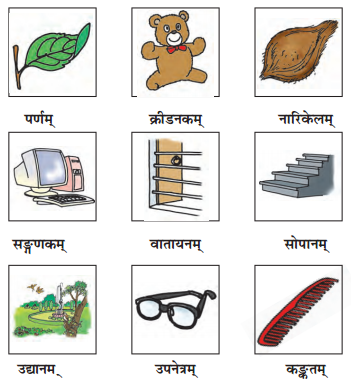



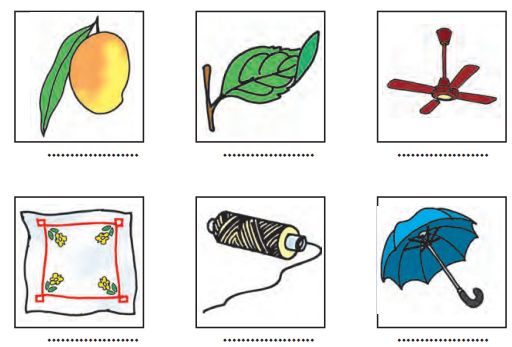
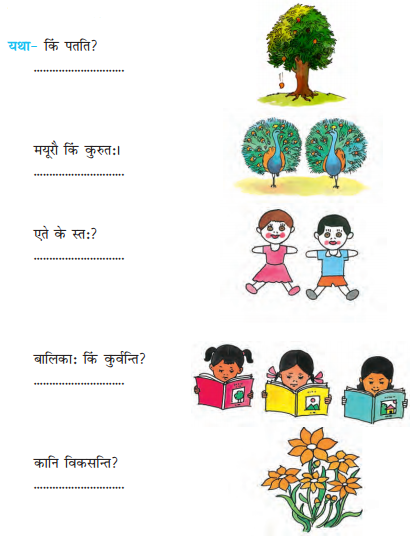
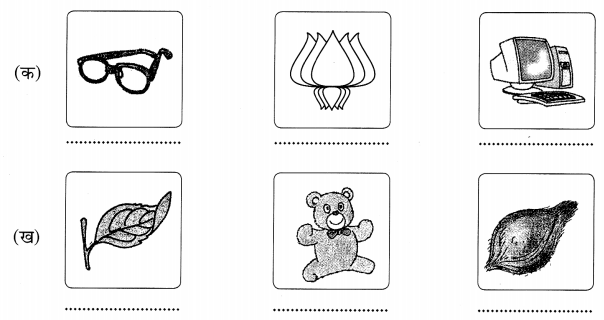







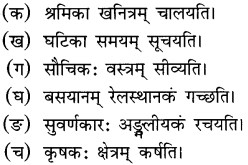
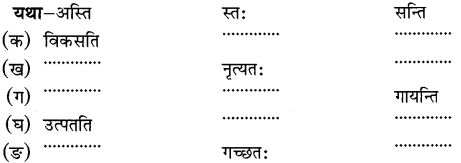

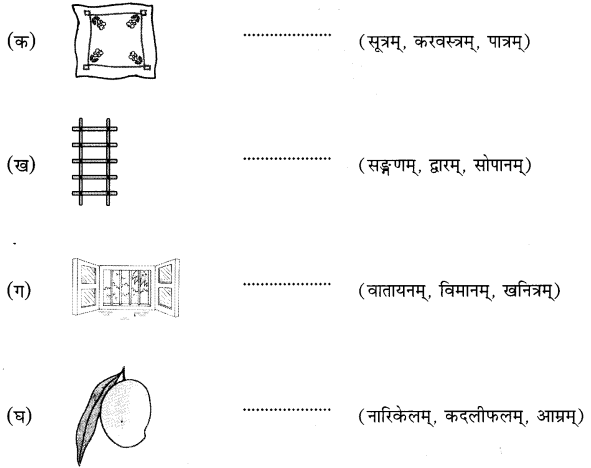

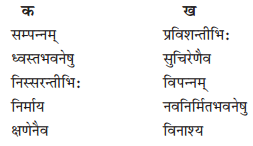
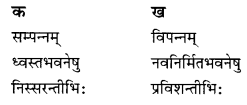


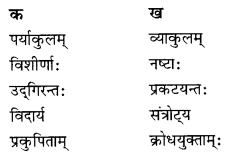



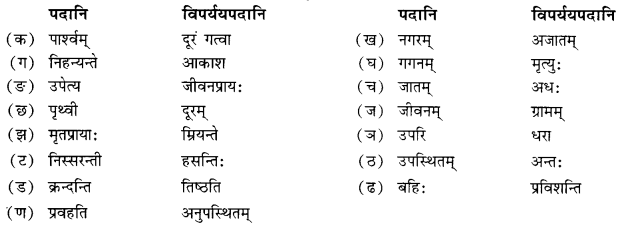



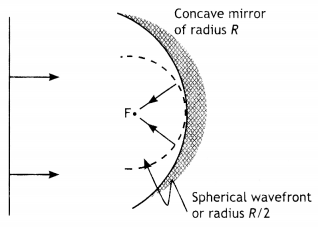
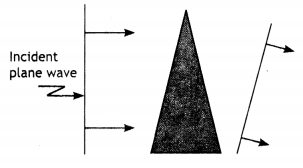
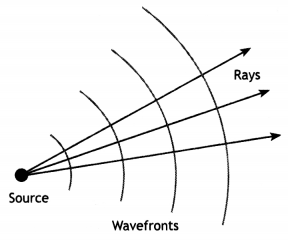
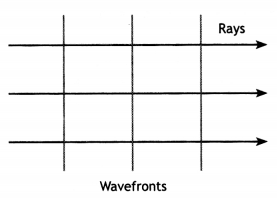
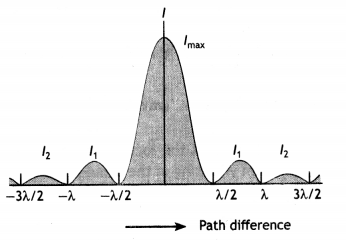
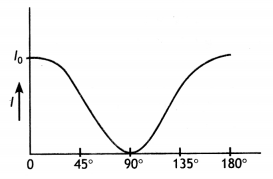

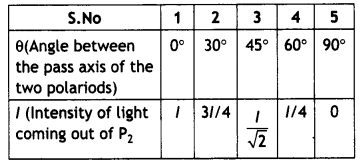
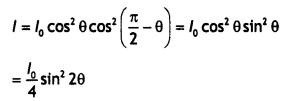

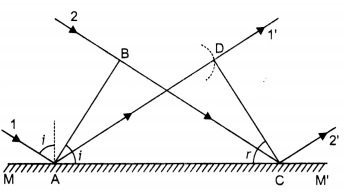
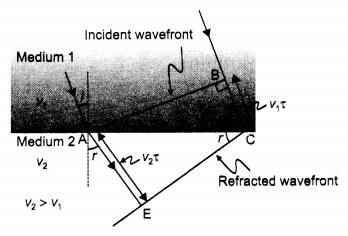
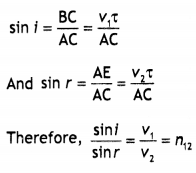
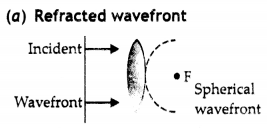
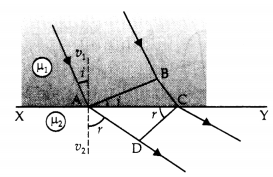
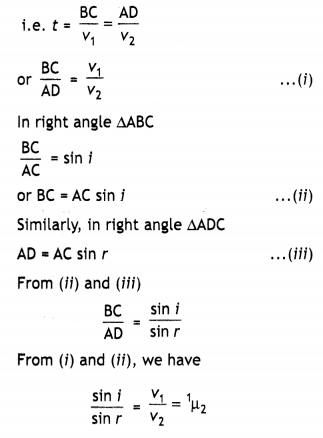
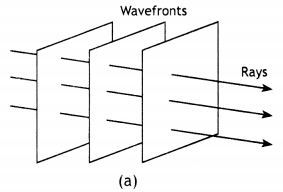
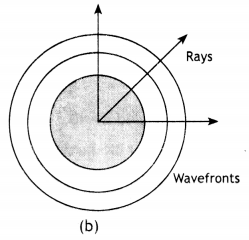
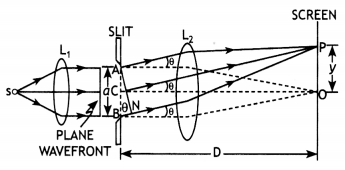

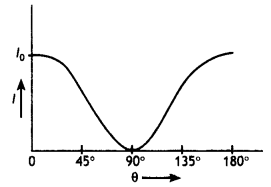
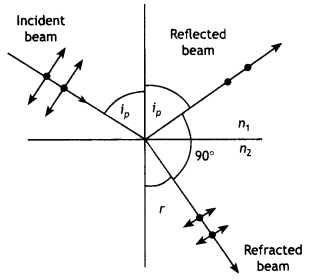
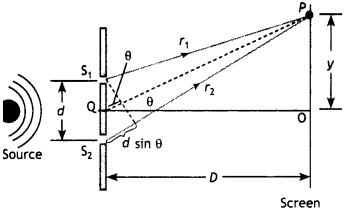

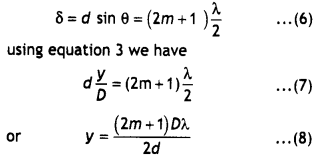

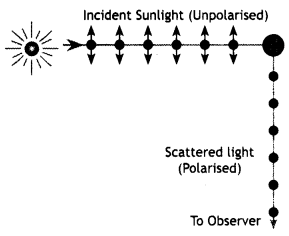
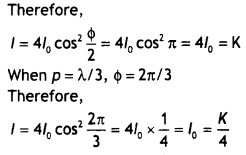


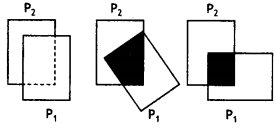
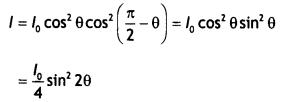
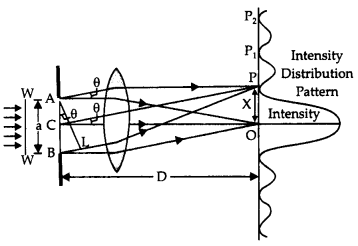
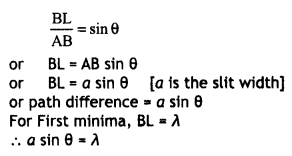
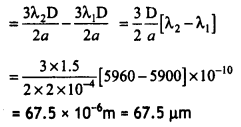
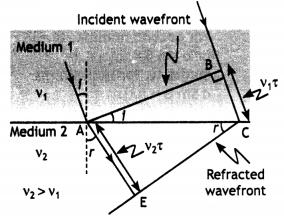
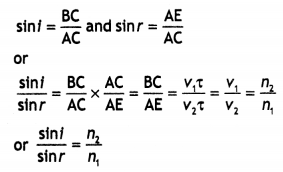
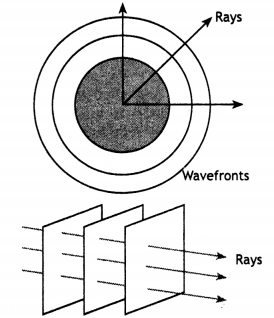
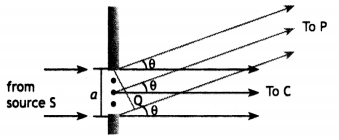
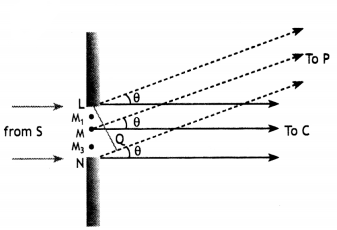
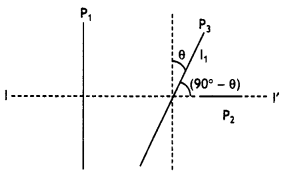
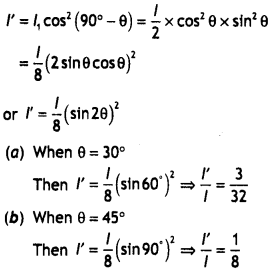


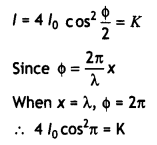
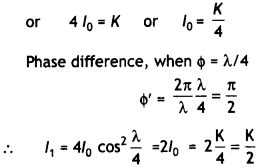
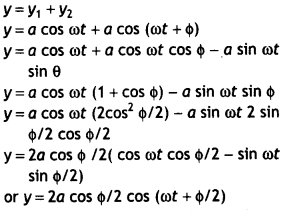
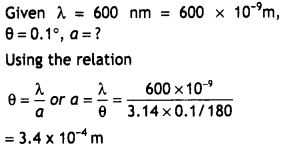
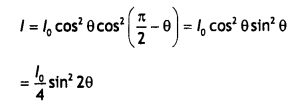
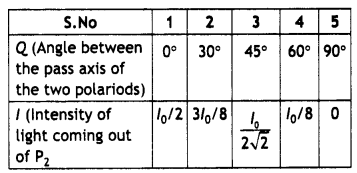
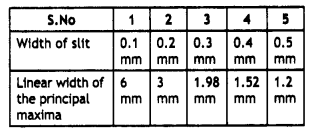

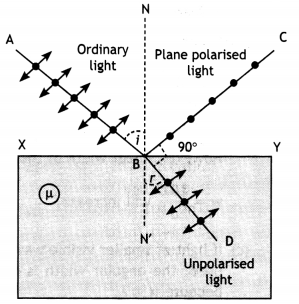
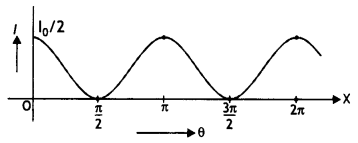
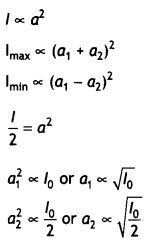
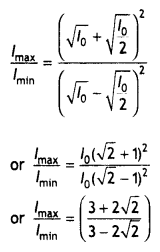

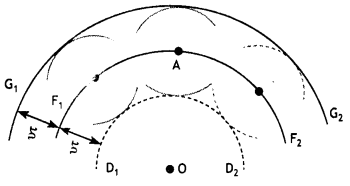
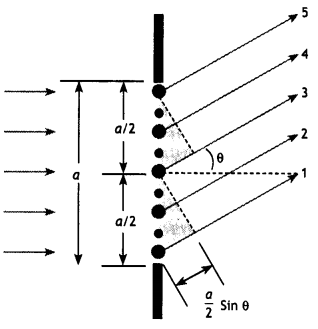
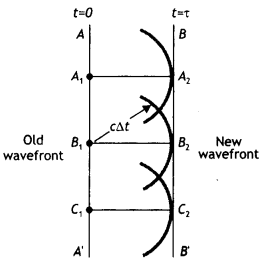
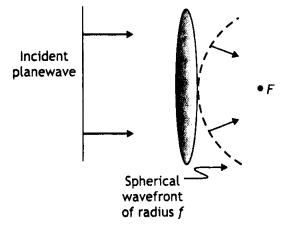

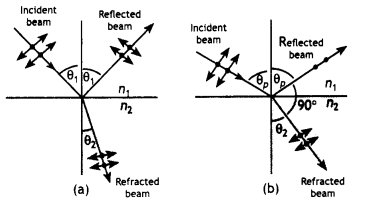
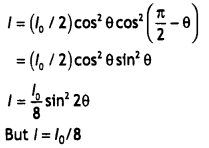



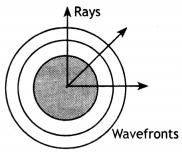
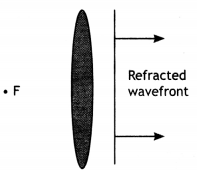
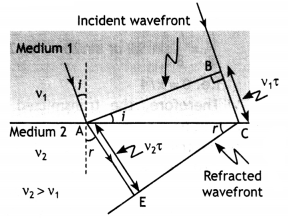
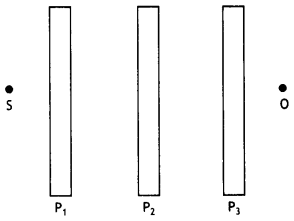

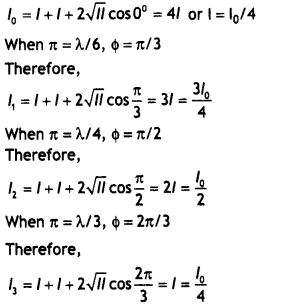
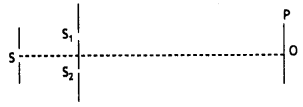


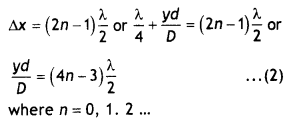
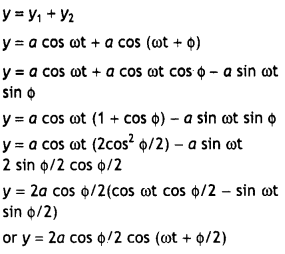

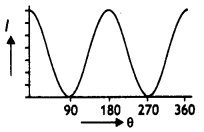

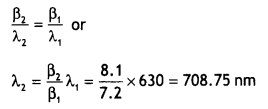
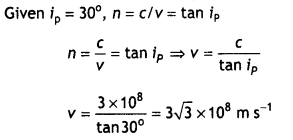

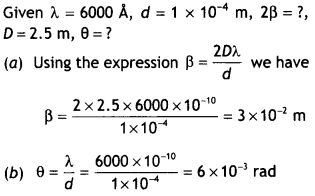


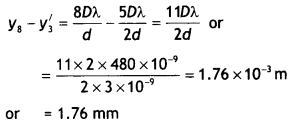
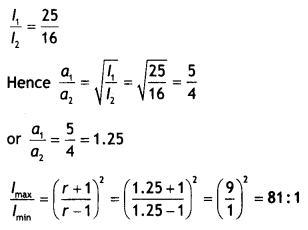
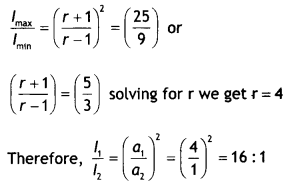
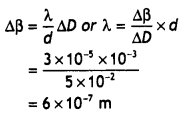
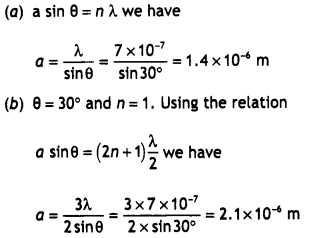




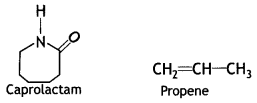
 it a homopolymer or copolymer? Give reason.
it a homopolymer or copolymer? Give reason.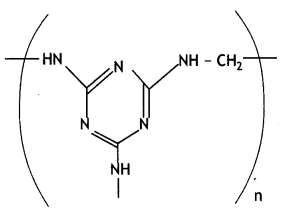

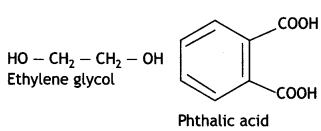
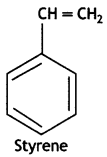
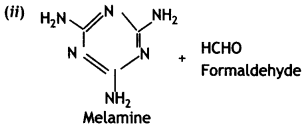

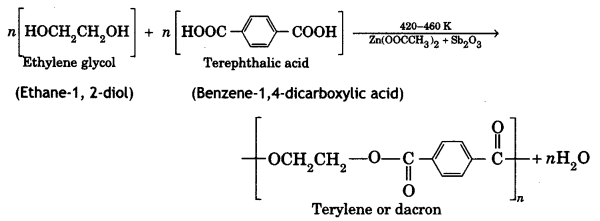

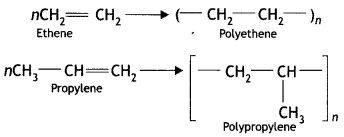
















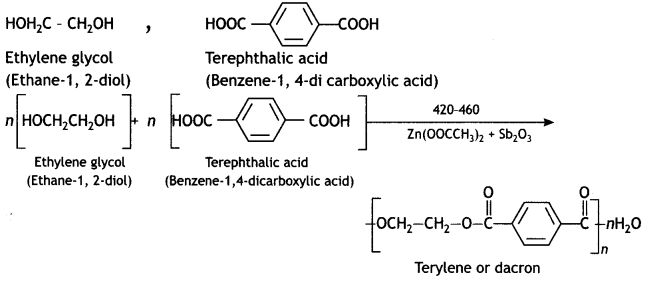




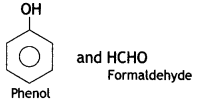
























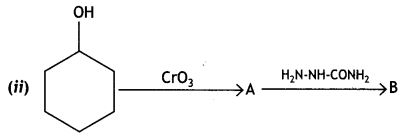












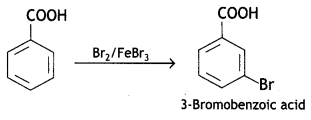
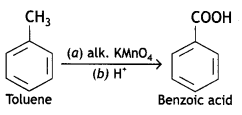





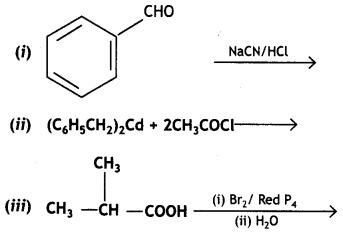




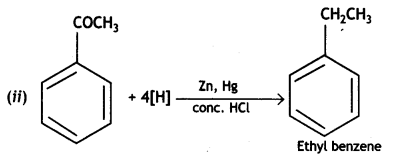








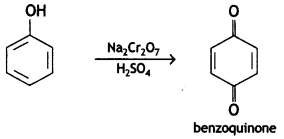














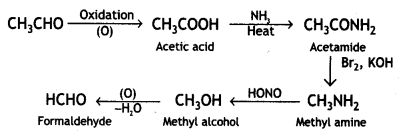




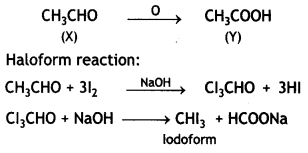

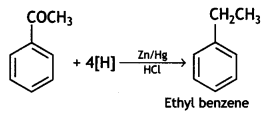






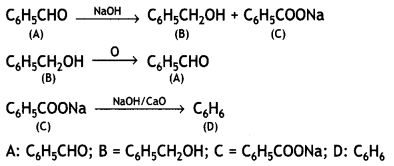




 a group because it gives positive iodoform test. Thus, the three isomers are:
a group because it gives positive iodoform test. Thus, the three isomers are: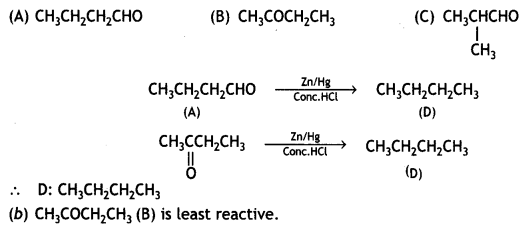





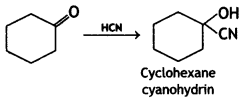



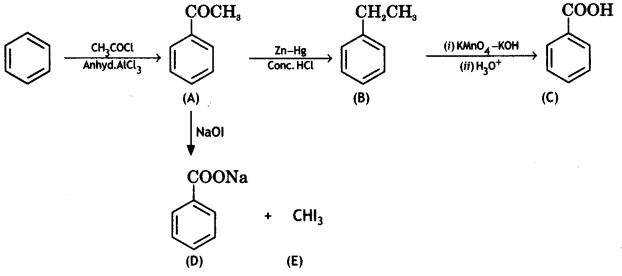









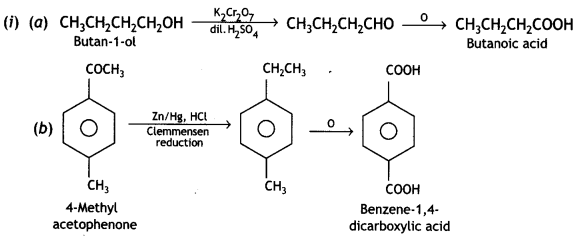
 (2- Ethytbenza(dehyde)
(2- Ethytbenza(dehyde)